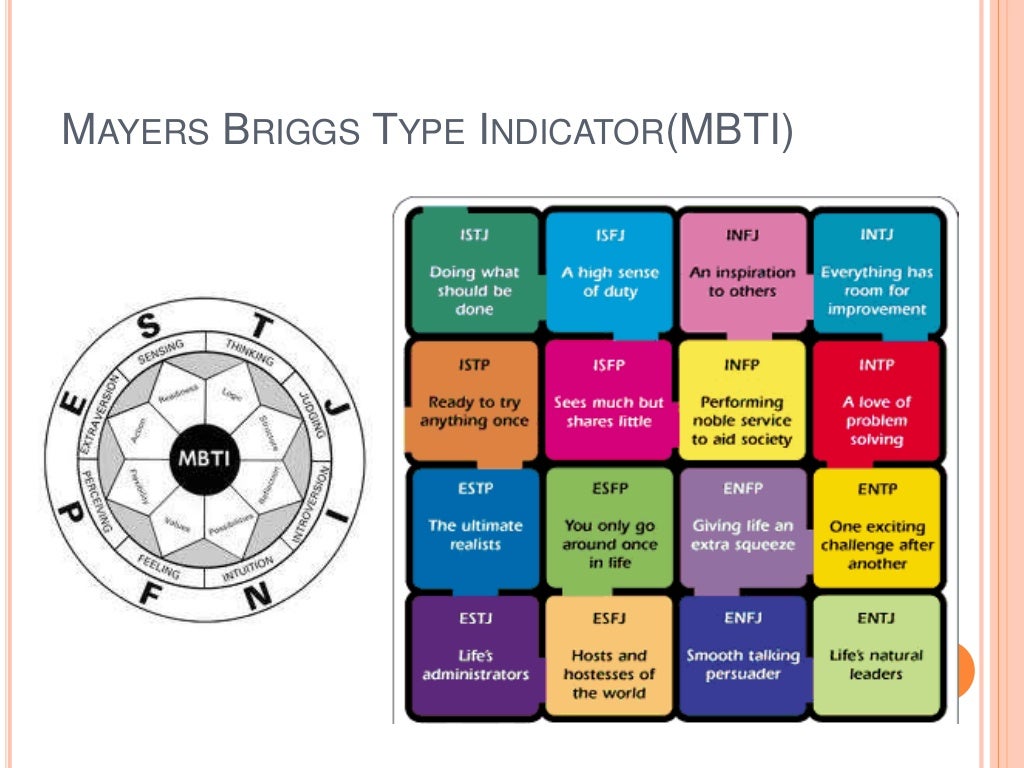

Furthermore, it takes both extroverts & introverts to build a successful engagement team.Joel A. However, according to research, introversion is slightly more common than extroversion. For example, it’s a common belief that only extroverts can engage with & relate to customers. In the consulting profession, some people may think only certain personalities can be successful. Once you’ve taken the test, you can find out how much each personality factor affects your disposition. My idea of relaxation involves reading a book by the beach More often than not, these questions relate directly to the type characteristic which requires you to rate how well you ‘relate’ to the question asked.
#Myers briggs type indicator free
The most common way of finding out our type is to visit free personality test websites, where they would require you to answer questions after questions after questions (or statements) in order to determine your type, as accurately as possible. Furthermore, MBTI is also compatible with the DiSC personality assessment. The resulting 16 types correlate with the 16 personality types described by Briggs & Myers (MBTI). In other words, he took the 16 types & simplified them into 4 temperaments by dividing the S side of the chart into J’s & P’s & the N side into F’s & T’s. Keirsey divided the four temperaments into two categories (roles), each with two types (role variants). In his works, Keirsey used the names suggested by Plato: Keirsey Temperamentsĭavid Keirsey expanded on the ancient study of temperament by Hippocrates & Plato.

So, each personality type indicates a preference. For example, someone who is ENFJ means that this person is Extroverted, iNtuitive, Feeling & Judging. In total, there are 16 personality types. In contrast, the Perceiving person responds in a spontaneous & flexible way. Correspondingly, the judging aspect of the type results in sequential step-by-step mental processing. Whereas, people who prefer to go with the flow are perceiving types (P). People who prefer a planned, well-structured life are judging types (J). The Thinking person judges using logic, while the Feeling person uses affective measures to judge. People who prefer to make decisions from an insider, emotional standpoint are feeling types (F). People who prefer to make decisions from a detached standpoint, using reason & logic to make conclusions are thinking types (T). The intuitive person, however, receives input from internal thinking processes. The sensing person prefers to use the five senses to receive information. People who prefer to deal with ideas, abstract concepts, & theories are intuitive types (N). People who prefer to deal with facts, details, & concrete information are sensing types (S). The introvert, however, prefers to focus on internal thoughts & ideas. An extrovert prefers to focus on other people & things. Extroverts are action-oriented, while introverts are thought-oriented. Contrarily, people who prefer to direct their energy inwards – to ideas, information, beliefs – are introverts (I). Generally, people who prefer to direct their energy outwards – to people, things, situations – are extroverts (E). The traits of extroversion & introversion are a central dimension in some human personality theories as the MBTI assessment. The Myers-Briggs Type Indicator (MBTI) classified people into four personality types: Today, it is a common tool used by individuals & organizations alike, be it to better understand themselves or to optimize workplace dynamics. It was designed to be used as a placement tool, a convenient & easy-to-use method for sorting employees in ways that maximized their happiness & the productivity of organizations. The original goal of MBTI was to improve the lives of working people by providing a rational basis for aligning people with jobs. Millions of people worldwide have taken the Indicator each year since its first publication in 1962.


Katharine Cook Briggs & her daughter, Isabel Briggs Myers, developed the MBTI tool in the 1940s. Jung introduced in the theory of psychological types in the 1920s by. MBTI, short for Myers-Briggs Type Indicator, is a personality metric developed by & her daughter Isabel Briggs Myers, based on Carl Jung’s theory on psychological types. It will enable you to approach your tasks, projects and coworkers in a way that suits your style, while accommodating others’ styles. Understanding your preferences and the preferences of others can be beneficial to you at work. The Myers Briggs Type Indicator (MBTI) is a tool that helps people gain insight to their own psychological ‘type’ preferences, which can help you understand natural differences among people. Each of us has a different way of taking in information, making decisions, and approaching life.


 0 kommentar(er)
0 kommentar(er)
